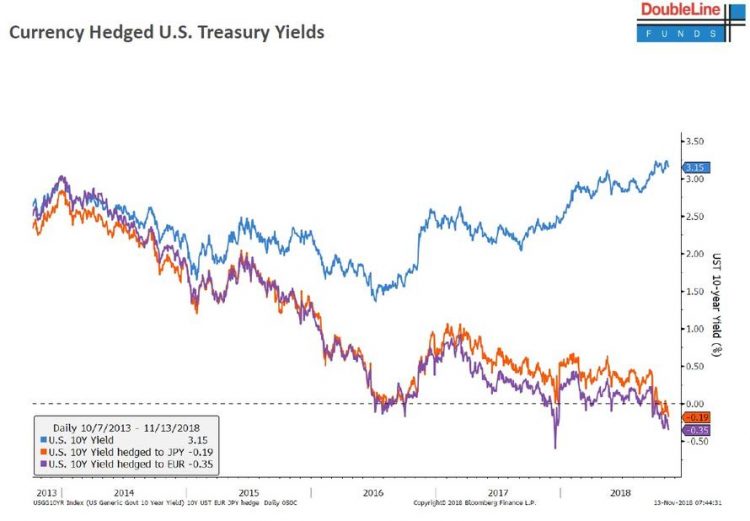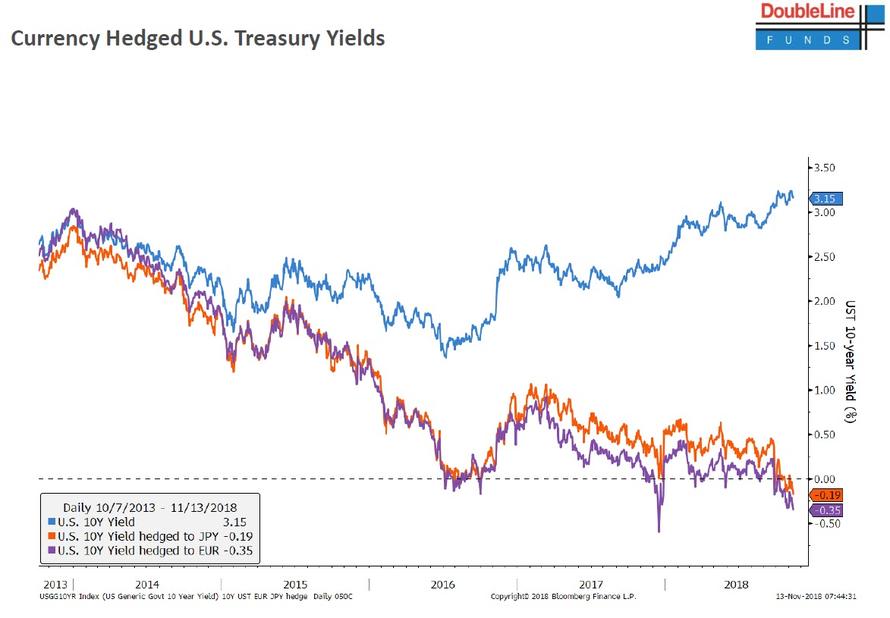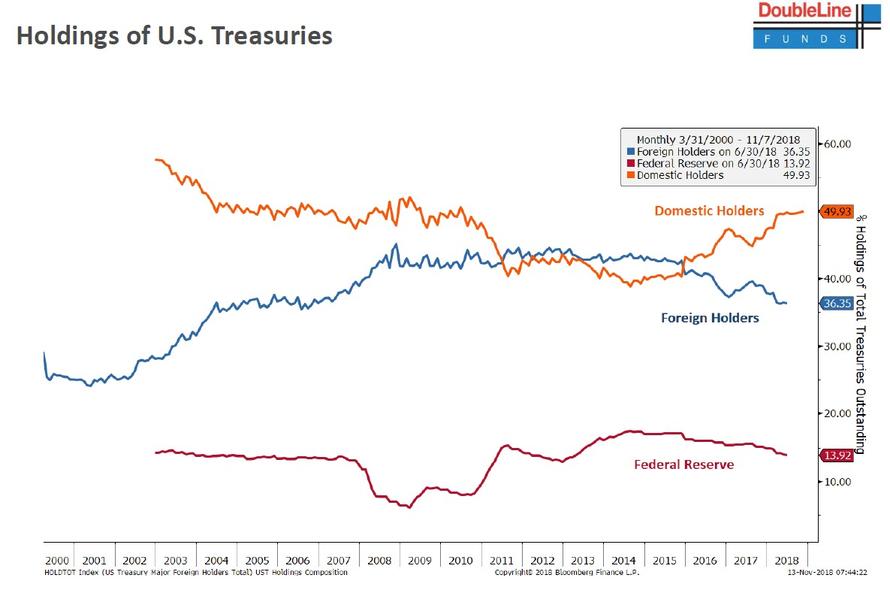
Earlier this week, DoubleLine’s Jeff Gundlach held his latest webcast with investors in which he warned that as a result of rising hedging costs, US Treasury bonds have become increasingly unattractive to foreign buyers. This can be seen in the chart below which shows the yield on the 10Y US TSY unhedged, and also hedged into Yen and Euros. In the latter two cases, the yield went from over 3% to negative as a result of the gaping rate differential between the Fed and ECB or BOJ.

This is also why, as the next chart from Gundlach showed, foreign holdings of US Treasurys have been declining in recent years, and dropped to just over 36% as a percentage of total holdings, the lowest in over a decade, as domestic holdings of US paper have risen to just shy of 50%, and near all-time highs.

Which brings us to today’s latest monthly TIC data which showed that, as Gundlach would expect, the holdings of the two largest foreign US creditors, China and Japan, declined to a multi-year low.
As shown in the chart below, China’s holdings of U.S. Treasuries fell to the lowest level since mid-2017 as the world’s second-largest economy sold US reserves to stabilize the yuan which has been depreciating in recent months due to the ongoing trade war.

Chinese holdings of U.S. Treasuries declined for a fourth month to $1.151 trillion in September, from $1.165 trillion in August, a $14 billion decline. Despite the drop, China remained the biggest foreign creditor to the U.S., followed by Japan whose Treasury holdings also dropped by $2 billion to $1.028 trillion, the lowest since 2011.

Investors have been searching for clues whether China is dumping its vast holding of U.S. Treasuries to retaliate against U.S. tariffs, though Beijing has given no indication it’s doing so; meanwhile while the TIC data is relatively accurate, it tends to be revised rather materially which is why it is certainly possible that China’s real holdings, when adjusted for valuation and currency changes, are far lower.
















